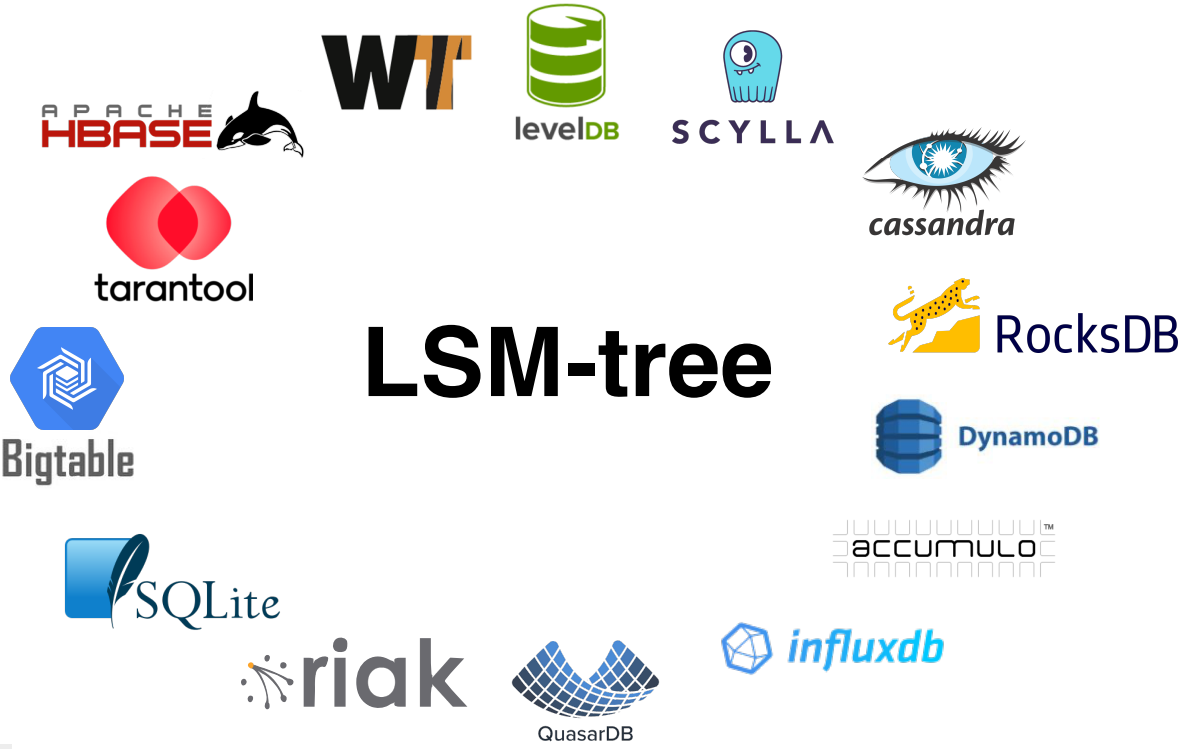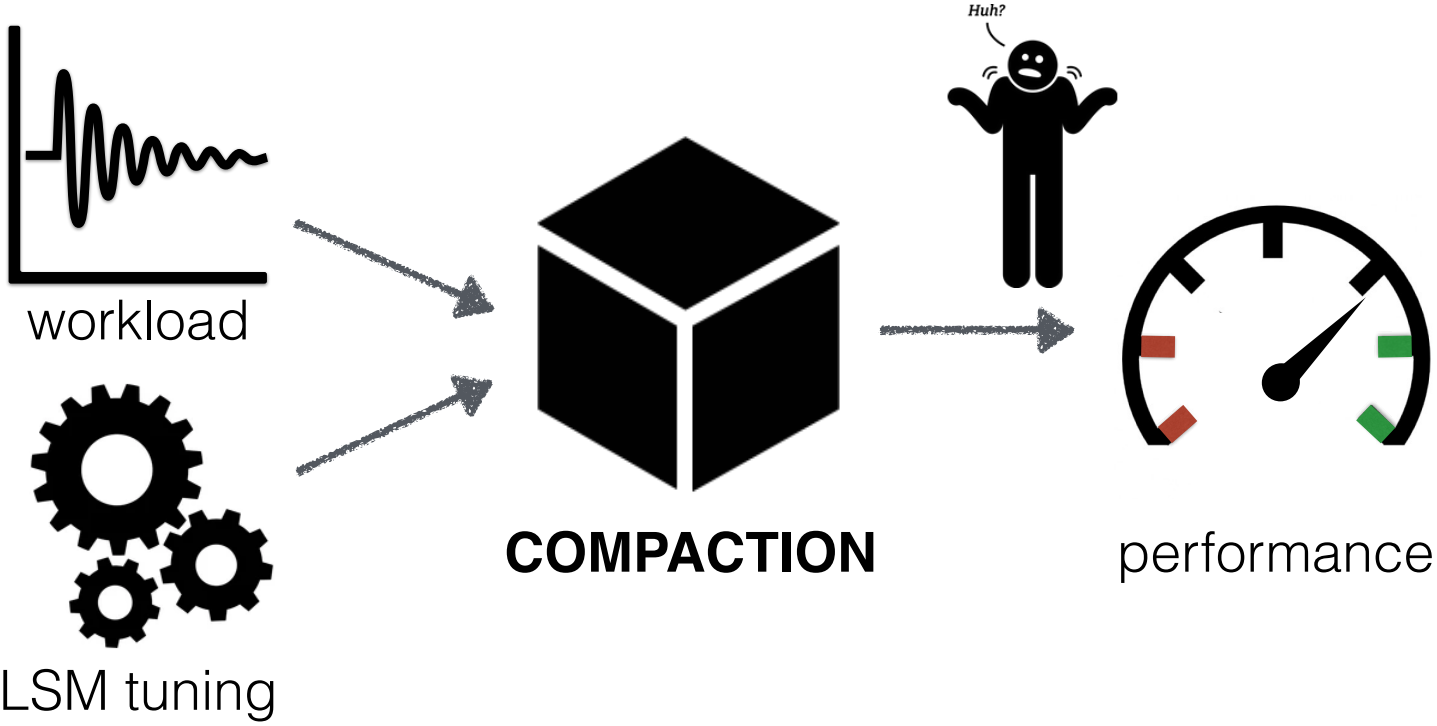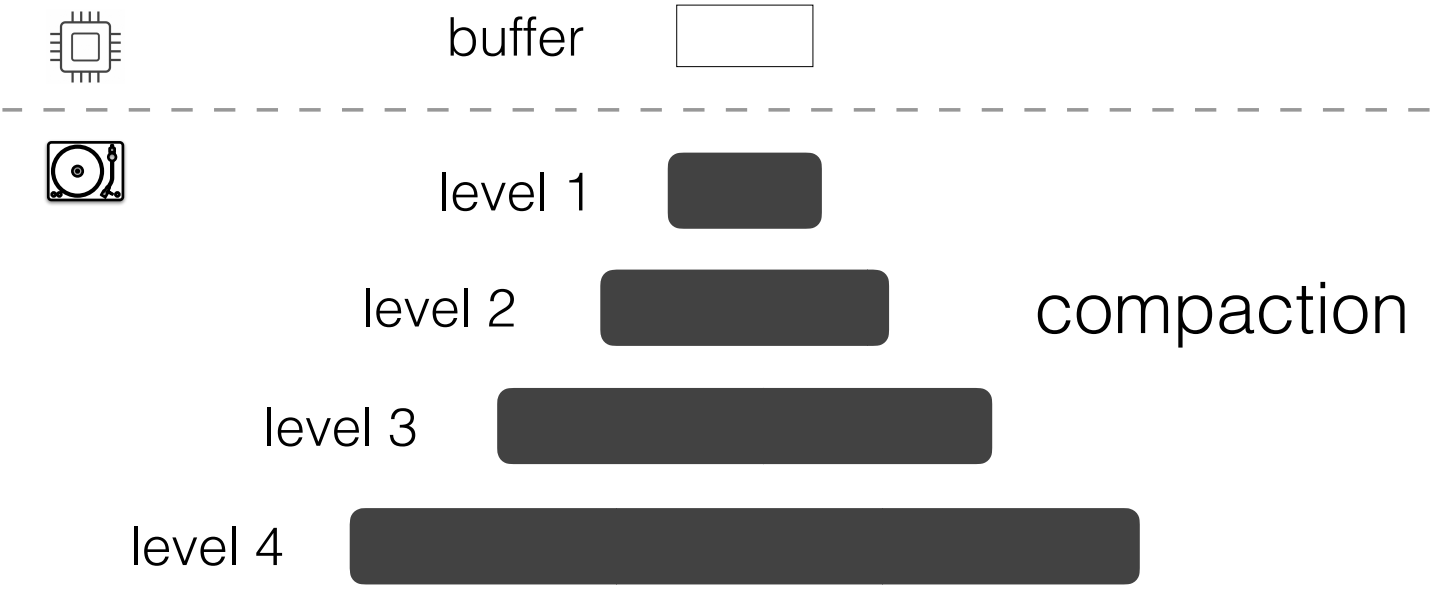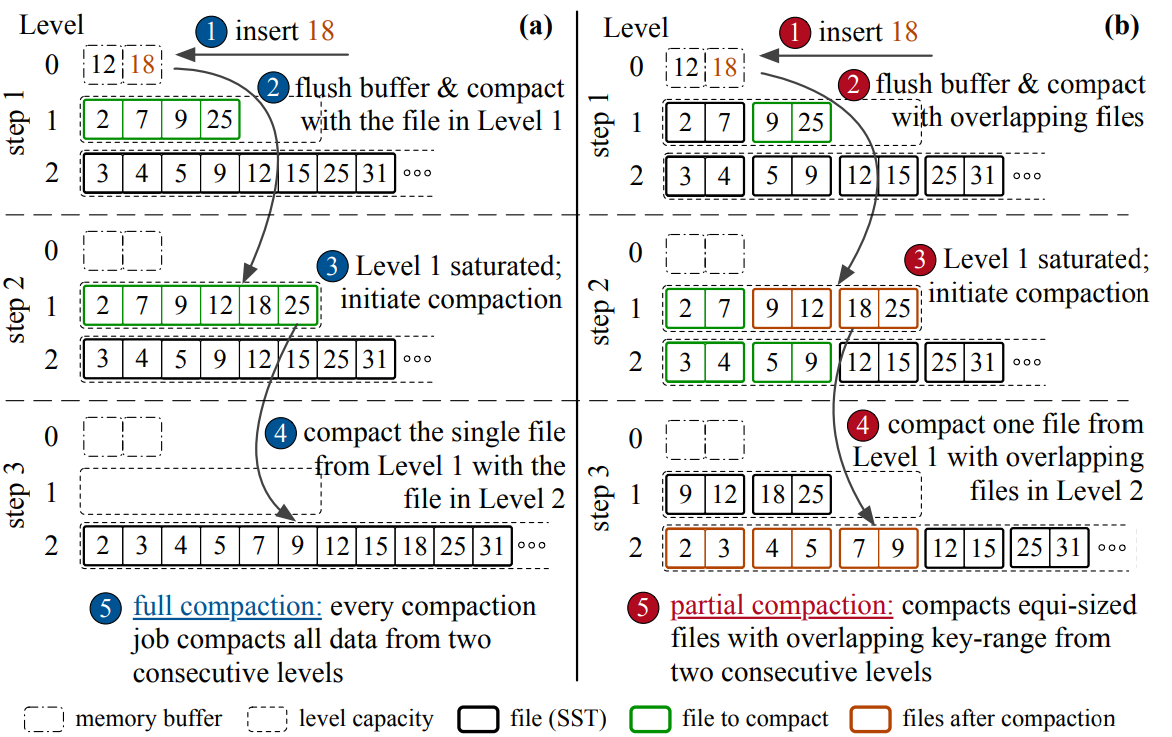 Compactionary is a dictionary for Log-structured merge (LSM)
compactions, that helps to visualize the implications of compactions
on performance for different workloads and LSM tunings. LSM trees offer efficient ingestion by appending incoming data, and thus, are widely used as the storage layer of production NoSQL data stores.
To enable competitive read performance, LSM-trees periodically re-organize data to form a tree with levels of exponentially increasing capacity, through iterative compactions.
However, the LSM compaction design space is vast, largely unexplored, and has not been formally defined in the literature.
Compactionary is a dictionary for Log-structured merge (LSM)
compactions, that helps to visualize the implications of compactions
on performance for different workloads and LSM tunings. LSM trees offer efficient ingestion by appending incoming data, and thus, are widely used as the storage layer of production NoSQL data stores.
To enable competitive read performance, LSM-trees periodically re-organize data to form a tree with levels of exponentially increasing capacity, through iterative compactions.
However, the LSM compaction design space is vast, largely unexplored, and has not been formally defined in the literature.

In this demo, we present the design space of LSM-compactions, and animate the compaction process for various compaction strategies . Audiences are able to see how each compaction strategy behaves for a certain workload and compare their performance in terms of different metrics. Users can also create their own compaction policy with specifying the number of tiering levels and the number of leveling levels.
 LSM-trees buffer incoming inserts, updates, and deletes (i.e., ingestion, in general) within main memory.
Once the memory buffer becomes full, the entries contained are sorted on the key and the buffer is flushed to the disk-component of the tree.
For an LSM-tree with L levels, we assume that its first level (Level 0) is an in-memory buffer and the remaining levels (Level 1 to L − 1) are disk-resident.
On disk, each Level i (i > 1) has a capacity that is larger than that of Level i − 1 by a factor of T , where T is the size ratio of the tree.
LSM-trees buffer incoming inserts, updates, and deletes (i.e., ingestion, in general) within main memory.
Once the memory buffer becomes full, the entries contained are sorted on the key and the buffer is flushed to the disk-component of the tree.
For an LSM-tree with L levels, we assume that its first level (Level 0) is an in-memory buffer and the remaining levels (Level 1 to L − 1) are disk-resident.
On disk, each Level i (i > 1) has a capacity that is larger than that of Level i − 1 by a factor of T , where T is the size ratio of the tree.
 Classically, LSM-trees support two merging policies: leveling and tiering. In leveling, each level may have at most one run, and every time a run in Level i − 1 (i ≥ 1) is moved to Level i, it is greedily sort-merged with the run from Level i, if it exists.
With tiering, every level must accumulate T runs before they are sort-merged.
Recently hybrid compaction policies (e.g., the hybrid compaction as follows) fuse leveling and tiering in a single tree to strike a balance between the read and write throughput based on workload specifications.
To amortize data movement, and thus, avoid latency spikes, state-of-the-art LSM-engines organize data into smaller files, and perform compactions at the granularity of files instead of levels.
If Level i grows beyond a threshold, a compaction is triggered and one file (or a subset of files) from Level i is chosen to be compacted with files from Level i + 1 that have an overlapping key-range.
This process is known as partial compaction.
Classically, LSM-trees support two merging policies: leveling and tiering. In leveling, each level may have at most one run, and every time a run in Level i − 1 (i ≥ 1) is moved to Level i, it is greedily sort-merged with the run from Level i, if it exists.
With tiering, every level must accumulate T runs before they are sort-merged.
Recently hybrid compaction policies (e.g., the hybrid compaction as follows) fuse leveling and tiering in a single tree to strike a balance between the read and write throughput based on workload specifications.
To amortize data movement, and thus, avoid latency spikes, state-of-the-art LSM-engines organize data into smaller files, and perform compactions at the granularity of files instead of levels.
If Level i grows beyond a threshold, a compaction is triggered and one file (or a subset of files) from Level i is chosen to be compacted with files from Level i + 1 that have an overlapping key-range.
This process is known as partial compaction.
We introduce a set of four design primitives that can formally define any compaction strategy: (i) the compaction trigger, (ii) the data layout, (iii) the compaction granularity, and (iv) the data movement policy.
| Dimension | Explanation | Sample Options |
|---|---|---|
| Data Layout | How to organize the data on device? | Leveling/Tiering/1-Leveling/Hybrid |
| Compaction granularity | How much data to move at-a-time? | Level/Sorted run/Sorted file(s) |
| Data movement policy | Which block of data to be moved? | Round-robin/Least overlap/Oldest/Coldest |
| Trigger | When to re-organize the data layout? | Level saturation/#Sorted runs/Timestamp/Space amplification |
The above four design primitives provide a structured decomposition of arbitrary compaction strategies. This allows us to create the taxonomy of the universe of LSM compaction strategies, including all the classical as well as new ones. For example, AsterixDB has a leveled-based LSM-tree (data layout) that compacts whole levels at a time (granularity) once a level reaches a nominal size (trigger). This design does not implement partial compactions, and thus it does not need a data movement policy.
A more complex example is RocksDB which applies 1-leveling (tiering for level 1 and leveling for others) (data layout) and compactions are performed at the granularity of one or more files (granularity) according to the level saturation, file staleness and spalce amplification (trigger). RocksDB supports various data movement policy including Least Overlapping, Coldest, Oldest and Tombstone Density.
To demonstrate the operational flow of a family of state-of-the-art LSM compaction strategies, we introduce Compactionary. In our demo, users can better understand how each compaction happens through the compaction animation, and they can also examine the internal trade-off across different metrics (e.g., ingest, point lookup and range lookup).